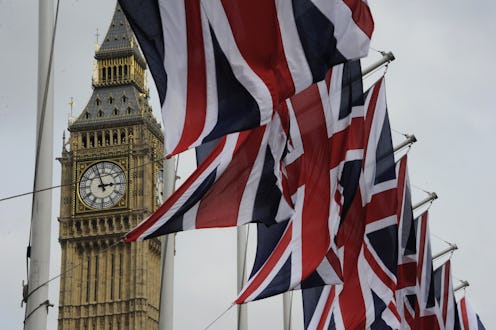I don't know about you, but one of the most interesting aspects of most languages to me (besides idioms, that is) is one that generally isn't discussed in polite company: Swear words. Different cultures consider such different things to be uncouth, and it's fascinating. So here — let's all learn how to swear in British English, courtesy of the YouTube channel and web series Anglophenia's latest video. It's called, appropriately, “How to Swear Like a Brit”… but if you don't like harsh language, you might want to sit this one out. Just sayin'.
New host Kate Arnell, who recently stepped into Siobhon Thompson's shoes, walks us cheerfully through four commonly used British curse words — and I don't think I'm alone in my opinion that they're vastly more entertaining than American ones. You see, not unlike the differences between American and British homes, there are a number of difference between American and British swear words, too. The biggest one? Is how versatile they are. I was already familiar with all of these words, but thanks to this video, I now know a few more meanings and usages for them. Who knew one tiny word could suit so many different scenarios?
Check out a few of the highlights here, and scroll down to watch the full video.
1. Bloody
As in, “Stop bloody swearing!” (talk about the pot calling the kettle black, right?). Although it's debatable exactly how and when this one entered the English language, Arnell cites a few theories: In one, it's chalked up to the aristocratic youths of the 17th and early 18th centuries who were known as “bloods” (and also frequently drunk — that's them up top); another, however, pegs it as a direct translation of the German word “blutig,” which was brought back in the 16th century by Englishmen who fought in the area. Its reputation as a swear word kicked up in the 1750s, and during the Victorian era, it got replaced by the upper class with words like “blinking” and “bleeding.” Why? Because “bloody” was thought to be a lower class word. Classisim is a bitch.
2. Bollocks
You probably already know that this one means “testicles”; what you may not know is that it's descended from an Anglo Saxon word, “ballocks,” which meant pretty much the same thing. Arnell notes that it's her personal favorite swear word, largely because of its versatility. An expression of displeasure, it can be used when something goes wrong (“I've run out of milk! Bollocks!”), to indicate that someone might be telling a lie (“Bollocks! I can see you hiding it behind your back!”)… or, hilariously, to indicate that something is amazing. See also: Eddie Izzard, “the dog's bollocks.”
3. Pissed
But not in the American sense of being “pissed off,” or angry (we're learning how to curse in the Queen's English, remember?). In the British sense, it often has something to do with alcohol — being “pissed” is to be drunk, while being “on the piss” is to be out getting drunk — but not always. Telling someone to “piss off,” for example, is telling them in rather harsh terms to go away; “taking the piss out of” someone someone is to tease them; and “pissing about” means being silly.
4. Sod
When I think of “sod” beyond its meaning as a piece of earth, I usually pair it in my head with the word “off,” with “sod off” meaning roughly the same thing as “piss off.” Apparently, though — and this was news to me — someone can also be a sod, which Urban Dictionary classifies as a softer form of “fool” or “idiot.” “Sodding,” meanwhile, is frequently used where Americans might say “effing,” while “sod it!” can be used to express general frustration.
Check out the full video below — there's loads more to learn about each of these delightful and fun-to-use terms. Just, y'know… be careful when you use them.
Images: Anglophenia/YouTube (4)
